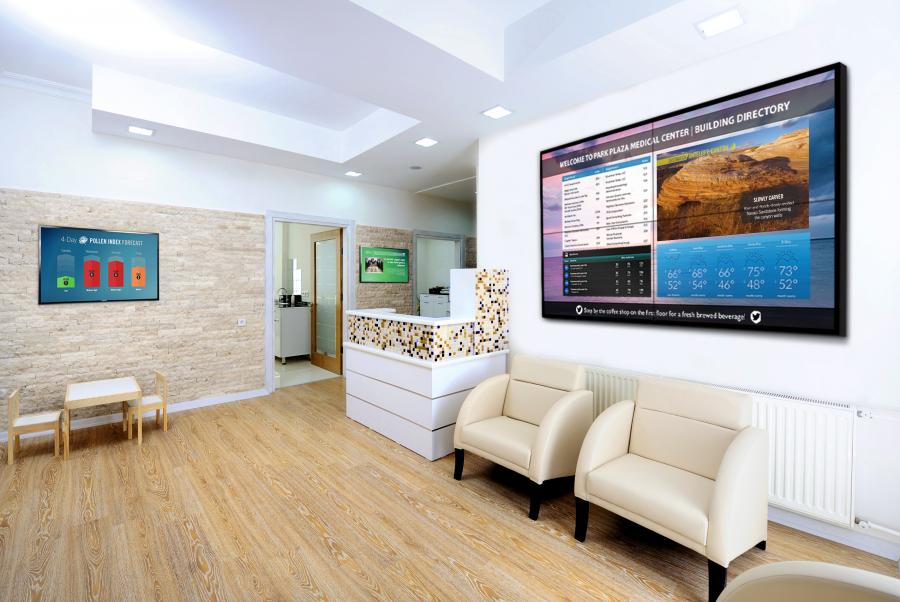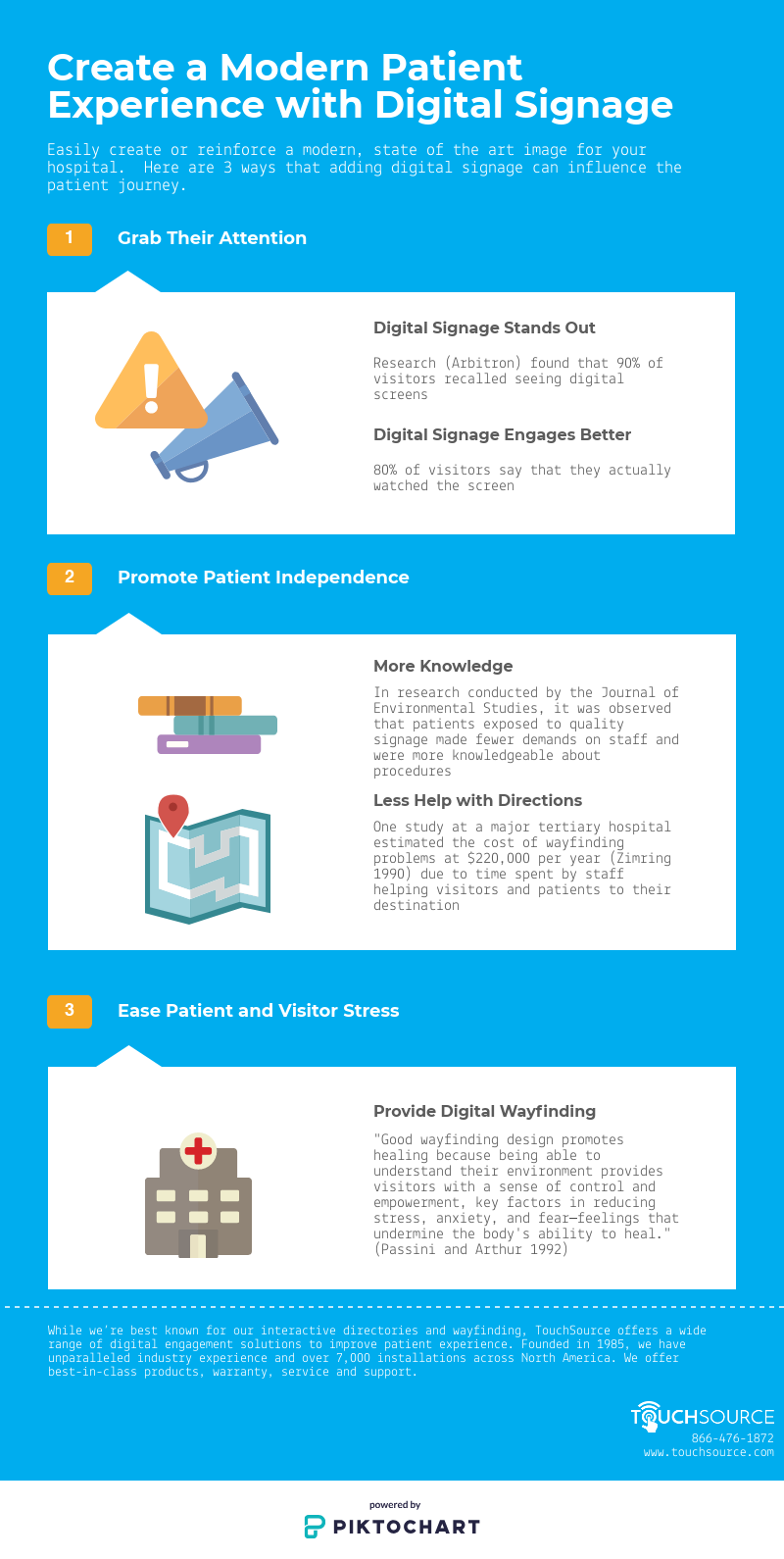Medical patients and healthcare professionals alike agree that a medical facility’s deployment of digital amenities like interactive kiosks, touch screen directories and digital information boards are a modern necessity for the appeal and success of the healthcare provider.
In fact, digital wayfinding and digital information screens can often be a deciding factor in a patient’s choice for primary care providers. In addition to the elevated look and modern feel that these technologies offer, digital signs create subconscious impressions on a patient’s perceptions of time, stress and self-control.
DIGITAL WAYFINDING CREATES EFFORTLESS CUSTOMER SERVICE
Extensive research of medical patients’ experiences in various care facilities, including information substantiated in the book, “Design that Cares: Planning Health Facilities for Patients and Visitors” agrees that coordinated wayfinding systems are needed in healthcare facilities, and that the ease of wayfinding directly affects stress levels in patients as well as medical employees.
The use of digital wayfinding increases a patient’s sense of self-sufficiency in large or complex medical buildings by providing concise, engaging and easy-to-understand instructions for getting to where they need to be. The simple ability to individually navigate medical facilities without getting turned around has proved to have an enormous impact on patients’ feelings of care and treatment, as we as their overall stress levels.
A report titled, “Information and environmental stress: Report of a hospital intervention,” showed that patients exposed to posted signs in an admitting area were less likely to seek guidance or directions from staff members and were more knowledgeable about admitting procedures and the types of amenities available.
AFFECTING THE PERCEPTION OF TIME
Studies on patient satisfaction of hospitals and medical facilities have shown that approximately 97% of patients are frustrated by long wait times, specifically in small or enclosed spaces with limited engagement or entertainment. When patients have nothing to do but stare at the clock until their turn to see their doctor, it negatively affects their mood and desire to be in that space.
Digital signage in waiting rooms can decrease perceived wait time by 33%, according to Retail Business Development. That means that a 30-minute wait can feel 10 minutes faster. The reason for this is cognitive engagement. By providing entertainment in various forms like trivia, informational videos, current event highlights and more, medical facilities can effectively decrease patient boredom and make time feel like it is moving faster.
BRIDGING CULTURAL AND INDIVIDUAL EXPERIENCES
Digital signs with dynamic communication capabilities are also highly useful for helping patients with a variety of cultural and language backgrounds to either translate or interpret information presented through universal symbolism. Research asserts that “in an era of global health, international travel and highly multicultural communities, there remains a pressing need for easily recognizable, universal way-finding signs for healthcare facilities.”
The capabilities of digital wayfinding and information boards are truly endless and virtually effortless to change and adjust, making it simple and cost-effective to fine-tune these signs and digital information streams to modern developments in communication, including options to change the displayed language. When a medical facility can smoothly address and customize the needs and experiences of each patient, regardless of age, ability and language, it is addressing customer service on a memorable and preferred level, all while allowing its employees to focus almost entirely on caregiving.

